India Wins Freedom Class 5 Notes SST
Arrival of Mahatma Gandhi
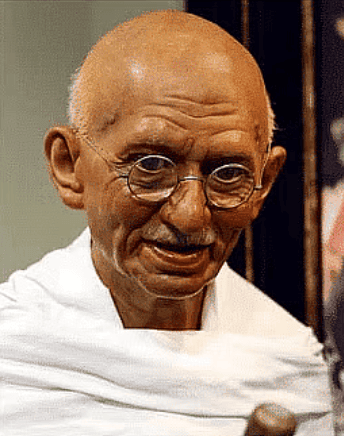 Mahatma Gandhi
Mahatma Gandhi
- Gandhi studied law in England and then went to South Africa to practice it.
- He saw unfair treatment based on race in South Africa and spoke out against it. His efforts led to the British accepting his demands for racial equality.
- Gandhi came to India in 1915 and travelled across the country to learn about its issues.
- He was troubled by the unequal treatment of Indians and social problems like the caste system.
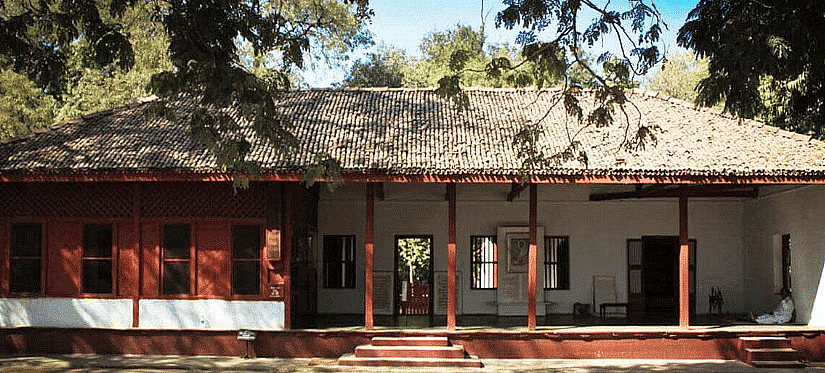 Sabarmati Ashram
Sabarmati Ashram - He aimed to unite people and encourage them to join the fight for freedom.
- In 1915, he established the Sabarmati Ashram in Ahmedabad. He promoted the use of khadi (handmade cloth) and the spinning wheel.
- Gandhi worked to help the untouchables, whom he called 'Harijans' or 'children of God.' He advocated for Hindu-Muslim unity and opposed alcoholism and the mistreatment of women.
- Gandhi also cared deeply about animal welfare and was against cow slaughter.
Satyagraha
- Mahatma Gandhi was a firm believer in Satyagraha, which means standing up for truth.
- The word Satyagraha is made up of two parts: "satya," which means truth, and "agrah," which means insistence or firmness.
- Gandhi used Satyagraha as a powerful tool to fight for justice and the rights of the Indian people.
- He believed that by relying on the strength of truth and nonviolence, known as ahimsa, he could persuade the British to leave India.
Champaran Campaign
- Mahatma Gandhi started his political work with the Champaran campaign.
- He wanted to help the indigo farmers who were treated unfairly by the British planters in Bihar.
- The Champaran Satyagraha was Gandhi's first Civil Disobedience Movement in India.
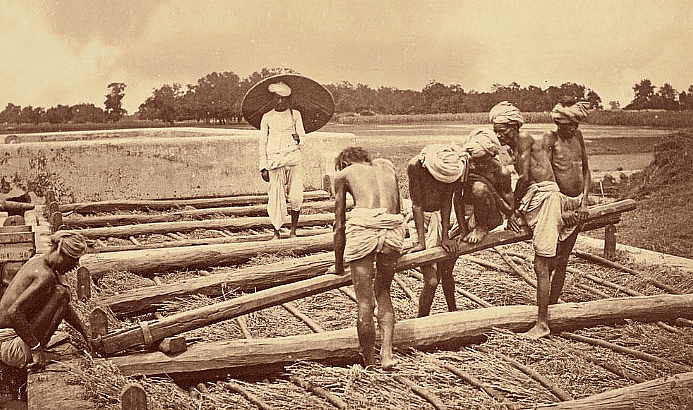 Indigo Farmers
Indigo Farmers - The farmers had problems with the Tinkathiya system forced upon them by the British.
- Under this system, farmers had to use one-third of their land to grow indigo, leaving less space for food crops.
- Gandhi protested against this unfair system using Satyagraha.
- His protest had a strong impact, and the government had to agree to the farmers' demands.
- This victory marked Gandhi's first successful battle in his fight for justice.
Importance of the Champaran Campaign
The Champaran campaign was a vital part of India's freedom struggle. It brought attention to the hardships faced by farmers and showed how effective non-violent protest could be in bringing about change.
Rowlatt Act
- The Rowlatt Act in 1919 gave the government the power to arrest people without a trial.
- People all over India protested against this unfair law through demonstrations and meetings.
- On April 13, 1919, a big meeting happened in a park called Jallianwala Bagh in Amritsar.
- Thousands of people, including women and kids, gathered there to protest the arrest of Indian leaders.
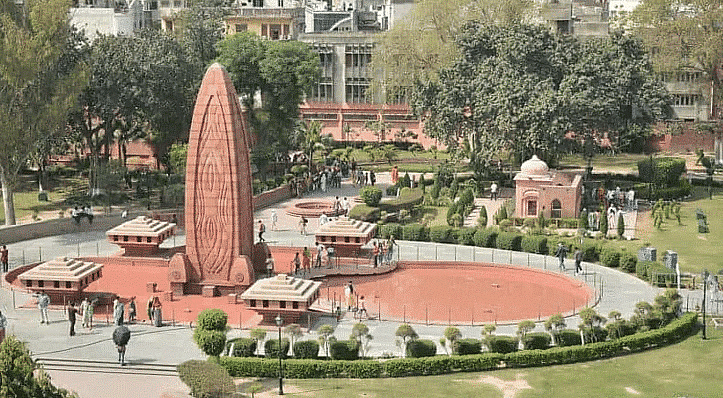 Jallianwala Bagh
Jallianwala Bagh - Suddenly, about 150 British soldiers led by General Dyer entered the park and blocked the only exit.
- Without warning, General Dyer ordered his soldiers to shoot at the unarmed crowd.
- Many innocent men, women, and children were killed in this brutal attack.
- This terrible event shocked the entire country and is considered one of the worst crimes by the British government in modern history.
Non-Cooperation Movement
- After the Jallianwalla Bagh tragedy, Gandhi wanted a peaceful way to protest British rule.
- The Congress agreed and passed a resolution for the non-cooperation movement in 1920.
- Gandhi asked people to stop cooperating with British institutions like schools, courts, and goods.
- British titles were rejected, and people like Tagore and Iyer gave up their honours.
- The Congress didn't take part in council elections, and people protested by hartals and burning foreign goods.
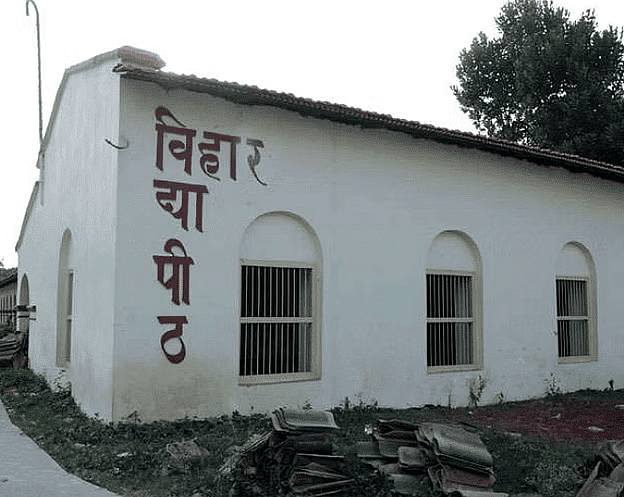 Bihar Vidyapeeth
Bihar Vidyapeeth - Students and teachers left British schools and joined Indian ones like Bihar Vidyapeeth and Jamia Millia Islamia.
- Many Indian lawyers and government workers quit their jobs to support the movement.
- The whole movement was peaceful, but a violent incident at Chauri-Chaura made Gandhi stop it.
- Despite disagreements, Gandhi believed in non-violence and stopped the movement.
- Many young leaders like Nehru, Patel, and Bose became active in politics during this time.
Simon Commission
- The British Government formed the Simon Commission in November 1927 to fix problems with law and order in India.
- The Commission was made up entirely of British members.
- Because of this, the Congress and the Indian people decided to boycott it.
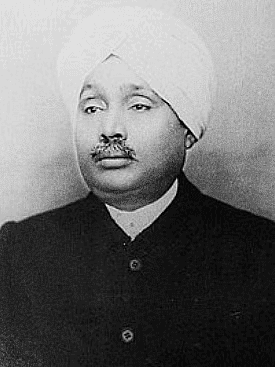 Lala Lajpat Rai
Lala Lajpat Rai - They didn't agree with a group of all British people making decisions for India.
- During a peaceful protest against the Simon Commission, Lala Lajpat Rai was badly hurt in a clash with British police.
- Sadly, he passed away not long after from his injuries.
Lahore Session
- In December 1929, a meeting of the Indian National Congress took place in Lahore.
- Jawaharlal Nehru was the president of this meeting.
- They all agreed that India should aim for complete independence, called Poorna Swaraj.
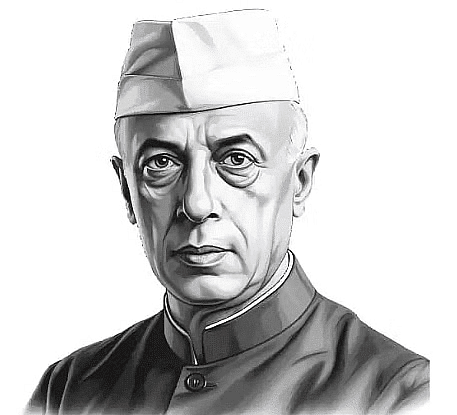 Jawaharlal Nehru
Jawaharlal Nehru - On December 31, 1929, Nehru raised the tricoloured flag near the river Ravi to show this goal.
- The leaders asked people to stop following British rules.
- This meeting in Lahore is very important in our fight for freedom.
- They also decided to start the Civil Disobedience Movement under Mahatma Gandhi's leadership.
Civil Disobedience Movement
- Gandhiji began the Civil Disobedience Movement with a famous march called the Dandi march.
- The British had made a law saying no one could collect salt from the sea without permission.
- Gandhiji and 78 followers walked from Sabarmati Ashram to Dandi village in Gujarat, covering 385 kilometres.
- They reached Dandi on April 6, 1930, where Gandhiji made salt himself, breaking the Salt Law.
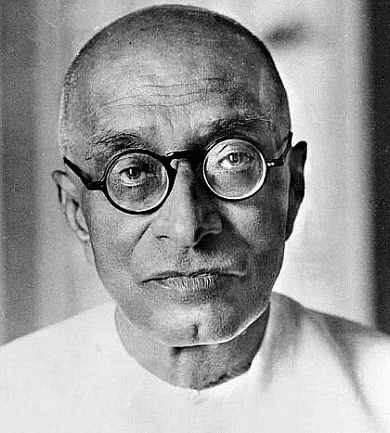 C. Rajagopalachari
C. Rajagopalachari - Many leaders from different parts of India joined this movement, including Khan Abdul Ghaffar Khan, Rani Gaidinliu, and C. Rajagopalachari.
- This movement became a big Civil Disobedience Movement across the nation, with active participation from women too.
- It continued until 1934 and put pressure on the British government.
- The British introduced the Government of India Act in 1935, which allowed more Indian participation in administration.
- However, Indians were still not satisfied because most powers remained with the British, and they just wanted the British to leave India.
Quit India Movement
- World War II started in 1939, and the British wanted India to join without asking Indian leaders.
- By 1942, the war got really serious, and Indians demanded freedom.
- On August 8, 1942, at a meeting in Bombay, the Congress passed a resolution called the Quit India Resolution.
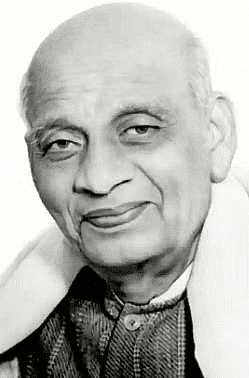 Sardar Vallabhai Patel
Sardar Vallabhai Patel - In this, Mahatma Gandhi asked the British to leave India and told his people to ‘Do or Die’ for independence.
- On August 9, 1942, the British arrested many leaders like Gandhi, Nehru, and Patel, which caused violence all over the country.
Azad Hind Fauj
- In 1943, Subhash Chandra Bose created the Indian National Army (INA) or Azad Hind Fauj to fight against the British.
- Bose wanted to free India from British rule using force.
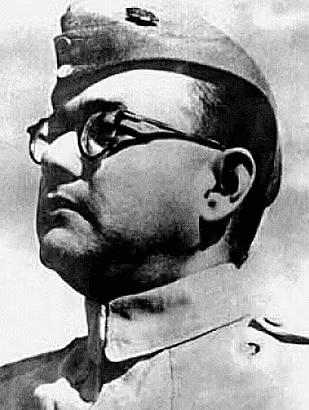 Subash Chandra Bose
Subash Chandra Bose - He was called Netaji, and he gave the slogans 'Jai Hind' and 'Dilli Chalo' to inspire the Indian people.
- The Azad Hind Fauj was formed in Japan by Indian prisoners who were captured by the Japanese during World War II.
- General Mohan Singh and Rash Behari Bose helped form this army to fight for India's freedom.
India's Independence
- After World War II, the British lost a lot of power.
- The political struggle in India became very intense.
- The British realised they couldn't control India anymore.
- British Prime Minister Clement Attlee had to give India independence.
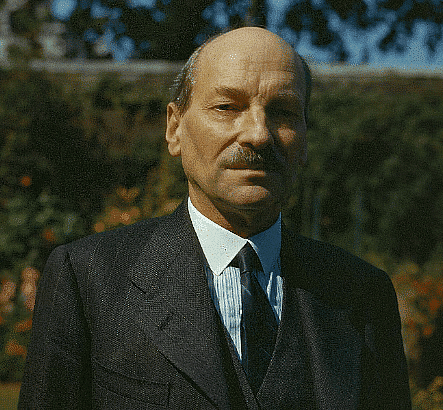 Clement Attlee
Clement Attlee - Mohammad Ali Jinnah from the Muslim League asked for a separate country called Pakistan.
- Lord Mountbatten, the Viceroy of India, helped with India's partition.
- Finally, both Congress and the Muslim League agreed to India's partition.
- Pakistan was born on August 14, 1947, and India became independent on August 15, 1947.
- Dr Rajendra Prasad became the first President of independent India, and Pandit Jawaharlal Nehru became the first Prime Minister.
|
33 videos|419 docs|50 tests
|
FAQs on India Wins Freedom Class 5 Notes SST
| 1. महात्मा गांधी का आगमन भारत में कब हुआ था और उनकी भूमिका क्या थी? |  |
| 2. सत्याग्रह का क्या अर्थ है और इसे किस प्रकार लागू किया गया था? |  |
| 3. चंपारण अभियान का मुख्य उद्देश्य क्या था? |  |
| 4. रॉलेट एक्ट के प्रभाव क्या थे और इसे क्यों लागू किया गया था? |  |
| 5. भारत छोड़ो आंदोलन का क्या महत्व था? |  |

















